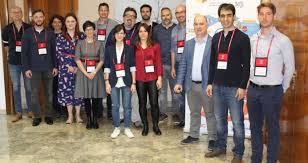PRIME / Advanced and versatile PRInting platform for the next generation of active Microfluidic dEvices (G.A. no. 829010).
H2020-FETOPEN-2018-2019-2020-01


Microfluidic devices manipulate tiny amounts of fluid enabling cost-effective, fast, accurate and high throughput analytical assays. Progress in Microfluidics has huge impact in environmental pollution monitoring, biohazard detection and biomedicine, contributing to the development of new tools for drug screening, biological studies, point-of-care diagnostics and personalized medicine. Despite this huge potential, Microfluidics market growth is heavily constrained by the complexity and high prices of the required large-scale off-chip equipment and its operational cost.
PRIME will use recently introduced 4D printing of liquid crystal elastomers for the direct implementation and integration of light-actuated valves and pumps in a microfluidic chip. Inkjet printing will produce new ultra sensitive and selective sensors embedded in the chip and readable with light. The final device will be remotely addressed and read using simple photonic elements that can be integrated in compact, portable and cheap operation&read devices. PRIME goes beyond the state-of-the-art generating a robust platform to create a new generation of active, tubeless and contactless microfluidic chips effectively changing the currently established paradigm.
PRIME will develop a radically new platform that:
i) integrates all the required responsive materials and elements in the chip, effectively providing it with all the fluidic and sensing functions,
ii) uses compatible materials and manufacturing technologies making future industrial production viable and cost-effective,
iii) allows to implement with extensive freedom of design a plethora of new smart-integrated and easy-to-operate microfluidic chips.
PRIME will thus narrow the gap between Microfluidics and non-specialized laboratories and end-users enabling the spread and penetration of the technology in diverse application fields as well as its geographical expansion to areas where large equipment is difficult to transport or resources are scarce. For more detailes see the project website.








